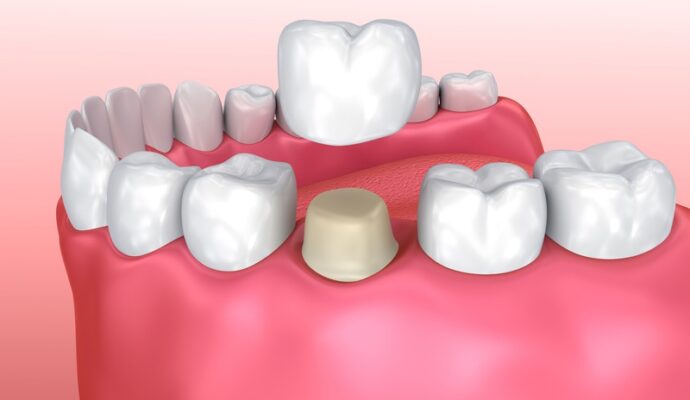Dental anxiety is a common issue among children, often leading to fear and avoidance of necessary dental care. Understanding the root causes of this anxiety is vital to addressing the problem. It could stem from a fear of needles, the sounds of dental instruments, or even a previous negative experience. For children who might not fully understand the need for dental procedures, managing this anxiety is crucial not only for their oral health but also for their overall well-being.
The Importance of Early Exposure
It’s essential to introduce dental visits early in a child’s life. Early exposure helps demystify the environment and familiarizes children with the routine aspects of a dental visit. This proactive approach can significantly reduce anxiety levels since children become accustomed to the sights, sounds, and even the friendly faces they will see at the dentist’s office.
Creating a Kid-Friendly Environment
A dental office designed with children in mind can profoundly ease anxiety. From bright colors to engaging toys and interactive games, the atmosphere can be transformed into a welcoming space that feels more fun than intimidating. Waiting rooms that cater to children’s interests often serve as a distraction, alleviating anxiety even before they enter the dental chair.
Role of Pediatric Dentists
Pediatric dentists play a crucial role in managing dental anxiety in children. Trained specifically to work with young patients, they utilize techniques tailored to children’s developmental stages and psychological needs. They focus on creating a positive and reassuring experience, employing methods such as “tell-show-do,” where they explain and demonstrate procedures before performing them.
Building Trust and Positive Relationships
Establishing a rapport with their young patients is a key component of a pediatric dentist’s role. Trust is built over time, starting with open communication and consistent positive experiences. This relationship helps children associate dental visits with a sense of safety and predictability, reducing their anxiety over time.
Moreover, many dental practices, such as those offering pediatric dentistry in Lake Jeanette, prioritize a personalized approach. This means recognizing that each child is unique and may require different strategies to feel comfortable during their visit.
Parental Involvement
Parents themselves play important roles in managing dental anxiety. Pediatric dentists often encourage parental involvement during visits, allowing children to feel more at ease knowing their caregivers are nearby. Educating parents on how to prepare their children for appointments without transferring their fears is also crucial.
The Role of Orthodontists
Orthodontists, like pediatric dentists, are instrumental in reducing anxiety through their specialized care for children. Understanding that the need for braces or other corrective treatments may heighten anxiety, orthodontists strive to provide a supportive environment. They offer reassurance about the benefits and process of treatments, making sure the child understands what to expect.
Explaining the Process
Clear communication is a key aspect of reducing anxiety about orthodontic procedures. Orthodontists ensure that both the child and their parents understand the treatment plan, the benefits, and the expected outcomes. By demystifying procedures, children can feel more at ease knowing exactly what will happen during their appointments.
For instance, an orthodontist in Greensboro might take the time to explain the use of various orthodontic appliances and demonstrate how they work, thus helping the child feel in control and informed.
Technology in Pediatric Dentistry and Orthodontics
Advancements in dental technology have significantly contributed to easing children’s anxiety. Less invasive treatment options, such as digital x-rays and laser dentistry, offer less discomfort and quicker recovery times. Interactive educational tools, such as digital demonstrations, help children visualize and understand their treatments, making the overall experience more engaging and less frightening.
Strategies to Help Children Feel Comfortable
Distraction Techniques
An effective way to reduce anxiety is through distraction. Here are some techniques that can be used during treatment:
-
Music and headphones to drown out unpleasant sounds
-
Watching cartoons or movies on overhead screens
-
Interactive games or apps on tablets
Positive Reinforcement
Rewarding children for their bravery or good behavior during a dental visit is an effective strategy. Rewards can be as simple as praising them or giving them a small toy or certificate. This approach encourages children to view dental visits in a positive light and look forward to future appointments.
Sedation and Pain Management Techniques
For some children, sedation might be a viable option to ease their anxiety, especially in cases involving complex procedures. Sedation can range from mild options, such as nitrous oxide (laughing gas), to moderate sedation, ensuring comfort and minimizing distress. Parents and dentists must discuss the best course of action, considering the child’s specific needs.
Regular orthodontic screening can also aid in the early detection of potential issues, minimizing the need for more invasive treatments in the future, thus keeping anxiety levels low.
Fostering a Lifetime of Good Oral Hygiene
Building Habits Early
Encouraging good oral hygiene habits from a young age can lead to a lifetime of healthy practices. By teaching children the importance of brushing, flossing, and regular dental visits, they learn to take responsibility for their oral health. This proactive approach can also reduce dental anxiety as children understand the positive outcomes of their efforts.
Empowering Children
Another effective strategy is to empower children by involving them in their dental care. Allowing them to choose their toothbrush and toothpaste or teaching them about the importance of healthy eating for good teeth makes them active participants rather than passive patients in their oral health journey.
Final Thoughts
Easing dental anxiety in children is a multifaceted approach that involves understanding, compassion, and strategic planning from both pediatric dentists and orthodontists. By creating child-friendly environments, building trusting relationships, and engaging children in their dental care, we can help young patients feel comfortable and even excited about their dental visits. This positive foundation sets the stage for a lifetime of good oral health and a relationship with dental care that’s driven by positivity rather than fear.




